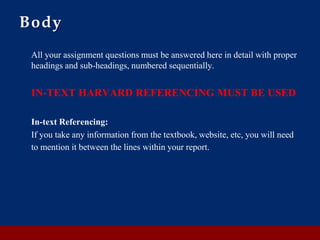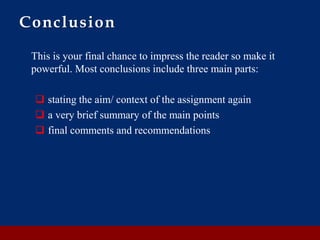The document outlines referencing guidelines, explaining the importance of proper citation to avoid plagiarism, ensure academic honesty, and enhance credibility. It discusses various referencing styles, particularly the Harvard system, detailing how to format citations for books, articles, websites, and different mediums. It also emphasizes the structure of assignments, including the cover page, executive summary, table of contents, and proper formatting requirements.
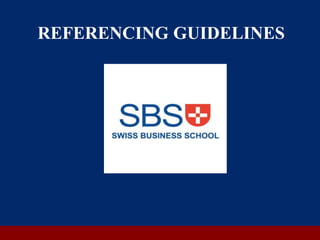
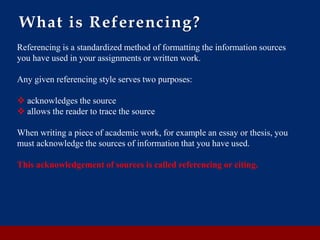
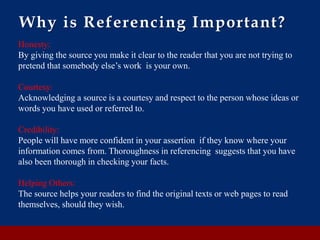

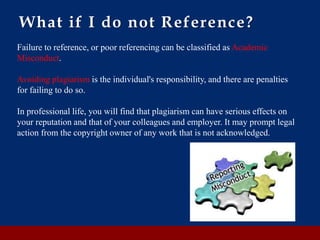
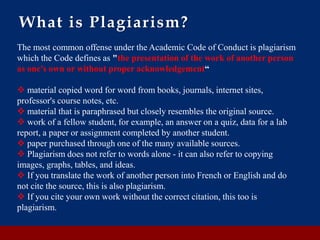








![Referencing from the Website
In-text: Website Name (Year Published)
Citation: Author/Editor, Initials. Year Published). Title. [online]. Place of
Publication: Publisher (if ascertainable). Available from: URL [Accessed Date
Month Year].](https://image.slidesharecdn.com/assignment-harvardreferencingguidelines-201217110757/85/Assignment-harvard-referencing-guidelines-15-320.jpg)
![Illustration – Website
Department for Children, Schools and Families. 2009. Background to
every child matters. Every Child Matters [Online]. Available at
http://www.dcsf.gov.uk/everychildmatters/about/background/background.
Accessed on 18th February 2010, 11:10pm.
Author(s)
Surname, Initial(s) if a person is
the author. Otherwise use
corporate author or organisation.
Date
Year site last updated (often shown
at the bottom of the page).
If not known, enter (no date).
Access information
Give full address of webpage,
and date and time you accessed
the resource.
Page Title
In sentence case Website Title
In Title Case and
italicised. Followed
by [Online].](https://image.slidesharecdn.com/assignment-harvardreferencingguidelines-201217110757/85/Assignment-harvard-referencing-guidelines-16-320.jpg)




![Referencing from Interview
In-text: Candidate’s Last Name (Year of Interview)
Citation: Candidate’s Last Name, Initial. Year of Interview. Title of Interview.
Interviewed by.. Name [Type of medium: TV/Radio/In person] Date, Time.](https://image.slidesharecdn.com/assignment-harvardreferencingguidelines-201217110757/85/Assignment-harvard-referencing-guidelines-21-320.jpg)
![Illustration – Interview
Ahern, B. 1999. Interview on Morning Ireland
Interviewed by... John Boyd [radio] RTE Radio 1,
15 February 1999, 08:30.
Author(s)
Surname, Initial(s).
Use & between two authors.
Date
Year of Interview Title of Interview
In Title Case and italicised
Interviewee’s Name
Date and Time of Interview
Type of Medium (Radio, TV, etc)](https://image.slidesharecdn.com/assignment-harvardreferencingguidelines-201217110757/85/Assignment-harvard-referencing-guidelines-22-320.jpg)






